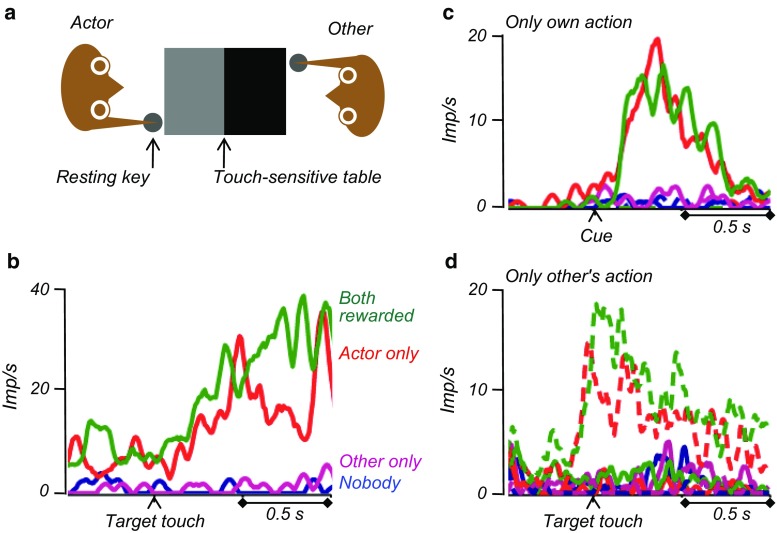Fig. 5.
Social reward signals in monkey striatum. a Behavioral task. Two monkeys sit opposite each other across a horizontally mounted touch-sensitive computer monitor. The acting animal moves from a resting key towards a touch table to give reward to itself, the other animal, both, or none, depending on a specific cue on the monitor (not shown). b Neuronal activation when receiving own reward, either only for the actor (red) or for both animals (green), but no activation with reward only for the other (violet) or nobody (blue). c Activation to the cue predicting own reward (for actor only and for both, red and green), conditional on own action, and not occurring with conspecific’s action. d Activation following target touch predicting own reward, conditional on conspecific’s action (dotted lines), and not occurring with own action. b–d Imp/s impulses per second, from Báez-Mendoza et al. (2013)

